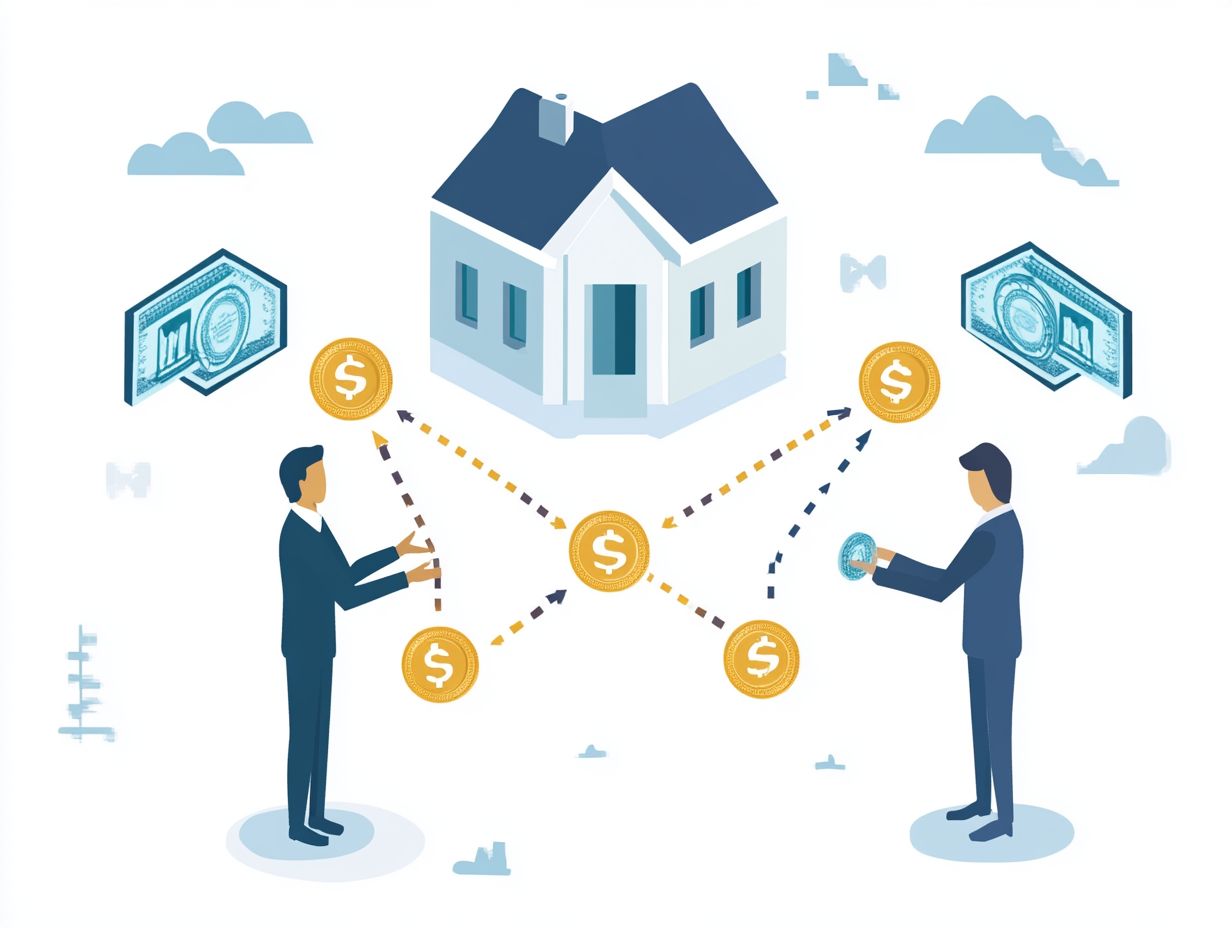Peer-to-Peer Lending: How it Works Explained
Peer-to-peer lending has become a transformative force in the financial landscape, presenting you with a compelling alternative to traditional banks. This innovative approach connects you, the borrower, directly with individual investors, streamlining the lending process and often resulting in more favorable terms for everyone involved.
You ll discover the step-by-step mechanics of P2P lending, showcasing its advantages for both borrowers and investors. It is also important to consider the risks involved and key considerations you should keep in mind before taking the plunge.
Whether you’re seeking to borrow or invest, grasping the nuances of this marketplace is essential for your financial journey.
Contents
Key Takeaways:

Peer-to-peer lending connects borrowers with investors through online platforms, cutting out traditional financial institutions. The process involves borrowers creating loan listings and investors choosing which loans to fund, with the platform handling payments and collections. While borrowers can potentially secure loans at lower interest rates, and investors can earn higher returns, it’s crucial for both parties to understand the ethics of peer-to-peer lending and carefully consider the risks involved before participating.
What is P2P Lending?
P2P lending offers you a transformative way to borrow and invest by connecting you directly with investors through online platforms, sidestepping traditional banks. For more insights, check out understanding the role of intermediaries in peer lending.
This innovative model grants individuals and small businesses access to capital while presenting unique opportunities for investors to earn higher returns on their investment.
Unlike conventional lending methods that often bog you down with extensive paperwork and stringent credit checks, P2P lending streamlines the process. You might discover that you can secure loans at competitive interest rates, often more favorable than those offered by banks, especially if your credit history isn t exactly traditional.
Online platforms like LendingClub, Prosper, and FundingCircle are vital players in this ecosystem, facilitating seamless transactions and promoting transparency. This enables you and the investors to make informed decisions.
Imagine how significantly your financial well-being can improve; you can utilize funds for essential needs while investors diversify their portfolios, potentially unlocking new avenues for passive income.
How P2P Lending Works
Understanding how P2P lending works requires you to grasp the funding process in which borrowers submit loan requests on online platforms. For a deeper insight, you can refer to understanding peer-to-peer lending: a beginner’s guide. Investors evaluate these requests to tailor their investment strategies, considering key factors such as credit scores, loan types, and the interest rates that borrowers are willing to accept.
Step-by-Step Process
The process of P2P lending is elegantly simple. It all starts with borrowers submitting loan applications, which investors meticulously evaluate through a comprehensive review of borrower profiles. For those interested in this investment option, understanding peer-to-peer lending: how to get started is essential. This leads to the funding phase, where suitable loan requests find their perfect match with interested investors.
When you submit a loan request, it typically includes key details like the amount needed, the purpose of the loan, and the desired repayment term. This information enables investors to assess risk and potential returns tailored to their unique investment strategies.
Each borrower s profile is complete with credit history and eligibility criteria, both essential for determining how likely you are to pay back a loan. Investors must delve into these aspects carefully, as they significantly impact approval rates and the repayment process.
Grasping these nuances not only elevates the lending experience but also fosters a trustworthy environment for everyone involved.
Benefits of P2P Lending

P2P lending presents a range of advantages for both borrowers and investors. As an investor, you can enjoy higher returns on your capital, while borrowers benefit from flexible options tailored to their unique financial needs.
This dynamic not only enables participants but also significantly enhances the overall financial well-being within the P2P lending ecosystem.
Don t wait! Explore P2P lending today to see how it can change your financial future!
For Borrowers
Peer-to-peer lending offers many benefits. You can access various loan types and enjoy simple online applications.
This lending model meets many needs. Whether you need personal loans to consolidate debt or cover unexpected expenses, or if you re a small business seeking capital, there s an option for you.
You’ll find competitive interest rates through direct connections with investors. This can lower your overall borrowing costs significantly.
Understanding your credit score is key. It affects your loan eligibility and repayment terms.
Read your loan agreements clearly. This ensures you can manage payments and avoid late fees.
For Investors
Peer-to-peer lending can provide higher returns than traditional investments. This allows you to diversify your strategy and tailor your portfolio.
Evaluate borrower profiles actively. This helps you find opportunities that fit your financial goals.
Understand how platform fees and default rates influence your returns. Default rates refer to the percentage of loans that borrowers fail to repay on time.
Use detailed metrics to navigate investments. This ensures your decisions optimize profit potential while safeguarding against unexpected losses.
Risks and Considerations
While peer-to-peer lending offers many benefits, be sure to recognize the built-in risks and considerations for both borrowers and investors.
Be aware of potential loan defaults, transaction fees, and the variability in default rates. These factors can influence your financial outcomes.
Balancing these elements is vital for making informed decisions in this lending landscape.
Potential Risks for Borrowers and Investors

In peer-to-peer lending, both borrowers and investors face a range of potential risks. As a borrower, safeguard your credit score and meet your repayment obligations.
Investors must also consider the risk of loan defaults, which can impact returns.
To protect your credit, prioritize consistent payments. Set up automatic deductions to ensure your payments are always on time.
Regularly monitor your credit reports. This helps you catch discrepancies before they cause problems.
For investors, diversify your portfolio across different loans and sectors. This strategy mitigates risk and boosts your chances of steady returns.
Careful selection of loan offers, based on thorough research and risk assessment, can minimize exposure to high-default loans.
Factors to Consider Before Participating
Before diving into peer-to-peer lending, carefully evaluate several key factors.
Consider the eligibility criteria for loan applications and how well it aligns with your investment preferences.
Understanding eligibility criteria is crucial for both you and the other party.
This knowledge helps determine the likelihood of securing funds and receiving returns.
Pay close attention to the various loan types and terms.
Differences in interest rates, repayment schedules, and fees can significantly influence your financial outcomes.
Regularly reassess your financial goals with your investment choices.
This sharpens your decision-making and fosters a sustainable lending environment.
Frequently Asked Questions
What is peer-to-peer lending?
Peer-to-peer lending, also known as P2P lending, is a type of lending that connects individuals or businesses looking to borrow money with investors willing to lend money. This process cuts out traditional financial institutions, such as banks, and allows the two parties to directly interact with each other. For a deeper understanding, check out this resource on peer-to-peer lending and interest rates.
How does peer-to-peer lending work?

In peer-to-peer lending, borrowers create a loan listing on a P2P lending platform, detailing the amount they need and the purpose of the loan. Investors then review these listings and decide which loans they want to fund. To better understand the process, consider the pros and cons of peer-to-peer lending. Once a loan is fully funded, the borrower receives the money and repays the loan with interest over a set period of time.
What are the benefits of peer-to-peer lending?
Peer-to-peer lending can be a game changer!
It often offers lower interest rates and flexible repayment terms, giving you more power over your finances.
Is peer-to-peer lending safe?
Peer-to-peer lending is generally considered safe, but there are risks involved, just like any type of investment. Borrowers may default on their loans, resulting in a loss for investors. It’s important for investors to carefully review loan listings and diversify their investments to mitigate these risks.
What fees are associated with peer-to-peer lending?
Both borrowers and investors may be subject to fees when using a P2P lending platform. Borrowers may be charged an origination fee for setting up the loan, while investors may be charged a service fee for using the platform. These fees can vary depending on the platform, so it’s important to carefully review the terms and conditions.
How is peer-to-peer lending regulated?
Peer-to-peer lending is regulated by various government agencies, such as the Securities and Exchange Commission in the United States, to ensure fair and transparent practices. P2P lending platforms must comply with regulations and provide investors with information about the loans they are investing in. However, it’s important for borrowers and investors to carefully research and choose reputable P2P lending platforms to minimize potential risks.






